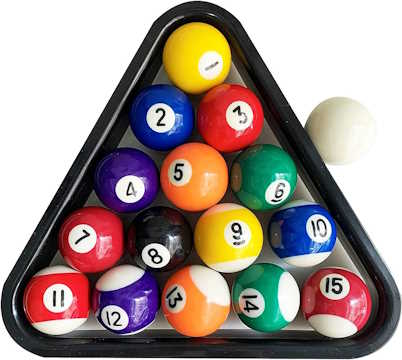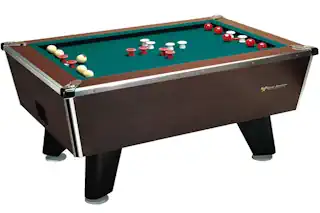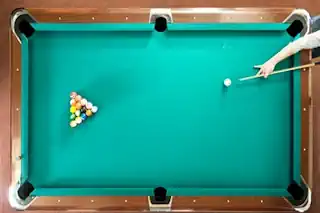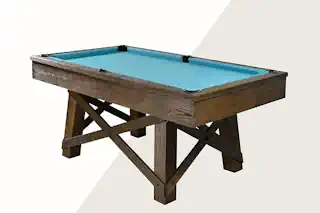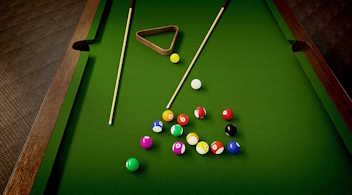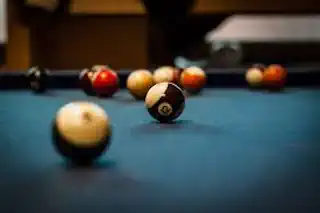A Beginners Guide to Billiard Terminology: Mastering the Language of the Game
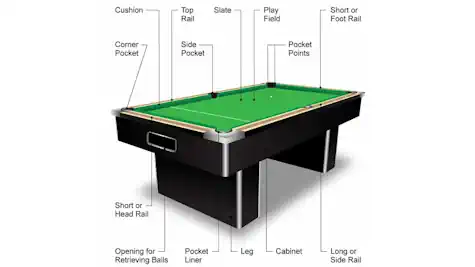
Hey there, pool enthusiasts! Whether you’re a seasoned pro or just starting your billiard journey, understanding the lingo is essential to truly enjoying the game. In this post, we’ll dive deep into the world of billiard terminology, exploring both basic and advanced terms that every player should know. By the end, you’ll be equipped with the knowledge to communicate effectively with other players and elevate your game to the next level. Let’s jump in!
Essential Pool Table Terms Every Player Should Know
Before we get into the more complex terminology, let’s start with the basics. Here are some essential terms that every billiard player should have in their vocabulary:
Cue Ball: The white ball that you strike with your cue tip on the cue stick to hit the other balls on the table.
Object Ball: Any ball on the table that isn’t the cue ball, which you aim to pocket or use for defensive shots.
Break Shot: The first shot of a game or rack, where the cue ball is used to scatter the racked object balls.
Rack: The triangular frame used to arrange the object balls at the beginning of a game.
Scratch: When the cue ball is pocketed, resulting in a foul and your turn ending.
Foul: A violation of the game’s rules that typically results in a penalty, such as losing your turn or giving your opponent a ball in hand (the ability to place the cue ball anywhere on the table before their shot). Fouls can occur for various reasons, including failing to hit an object ball, pocketing the cue ball (scratch), or committing a foot foul by not keeping at least one foot on the floor during a shot.
Safety Shot: A defensive shot that makes it difficult for your opponent to make their next shot, rather than attempting to pocket a ball yourself.
Called Ball: A rule in some pool games where you must announce the intended object ball you will attempt to shoot before making your shot. This ensures a fair game by requiring skillful play and strategic planning.
Called Pocket: This term refers to the practice where, before making a shot, a player must specify which pocket they intend to sink the object ball into. Sometimes a called ball and/or called pocket are referred to as a called shot. It’s common in games like 9-ball, 10-ball, and straight pool which are considered a call shot game.
Understanding these fundamental terms will help you communicate effectively with other players and follow the game’s basic rules. But there’s so much more to learn!
Understanding the Zones on a Billiard Table
Now that you’re getting comfortable with the basics, it’s time to familiarize yourself with the layout of the table, which is just as crucial as the terminology. Knowing the zones on a billiard table will not only help you plan your shots more strategically but also enable you to understand advanced playing techniques. Here are the key zones you should know about:
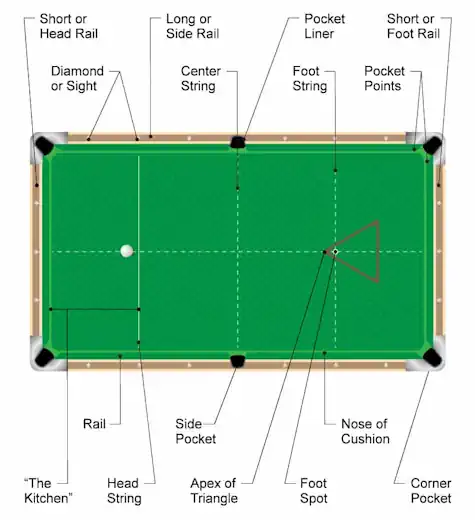
Cue Zone: The area behind the head string where the cue ball is placed for the break shot.
Head String: A line across the table near the rack area, defining the cue zone. It’s invisible but oh-so important.
Head Rail: The short end of the table where the cue ball is placed for the break shot. It’s a critical zone for initiating the game and for many strategic plays, especially in positioning for subsequent shots.
Rack Zone: The triangle area at the opposite end of the breakout, where the object balls are placed at the start.
Rails: The sides of the billiard table. Mastering shots off the rails can dramatically change the game in your favor.
Center Spot: The exact middle of the table, a pivot point for many strategies and shots.
Center String: Running the length of the table and perfectly bisecting it into two equal halves, the center string is an imaginary line that’s crucial for strategically aligning shots and planning the game’s progression.
Foot Spot: A spot on the billiard table where the apex ball is placed within the rack formation.
Foot String: An imaginary line that crosses the table perpendicular to the long rails and passes through the foot spot. This crucial line helps players align the rack correctly at the beginning of the game and serves as a reference for a legal opening break shot.
Head Spot: Located at the point where the head string intersects with the long center line of the table. This pivotal spot is essential for determining the starting position of the cue ball for many game types.
Baulk Line: Similar to the head string, the baulk line crosses the table horizontally but is situated at the end opposite the rack zone. It marks the front of the baulk, a key area that plays a significant role in games like English billiards and snooker. The baulk line is essential for specific shots, especially opening shots in snooker, and for certain rules governing the repositioning of the cue ball.
By visualizing and understanding these zones, you’ll start to see the table in a new light – not just as the place where the game is played, but as a canvas for strategy and skill. Remember, every great player knows the table like the back of their hand. So, take a moment, maybe even draw it out or stand by the table to visualize these zones. It’s a small step that can lead to big wins. Happy playing!
Parts of a Billiards Table: Knowing Your Battlefield
Alright, my billiard buddies, we’ve talked about terminology and zones, but what about the very arena where all the action happens? Yes, I’m referring to the billiard table itself. Understanding its parts will not only deepen your appreciation for the game but also improve your tactical play. Here we go:
Bed: This is the flat table surface or playing surface where all the action happens. Typically made of slate and covered with a cloth (often green), it provides a smooth and even playing surface.
Cushions: These are the padded edges along the rails of the table. They’re not just for resting your hands; they play a crucial role in the game, bouncing balls back into play with precision.
Pockets: The billiard table features six pockets, one at each corner (i.e the corner pocket) and one at the midpoint of the long sides (i.e. the side pocket). These are your targets, the final destination for the balls you aim to sink.
Cloth: Also known as the felt, this is the fabric that covers the bed and cushions. Its quality affects the speed and friction of the ball, adding another layer of strategy to the game.
Rails: The wooden or composite perimeter that surrounds the bed, holding the cushions and providing a surface to lean on and aim from.
Diamonds: Not the gems, but equally valuable in the world of billiards! These are the small, inlaid dots along the rails of the table. They’re used as visual guides to help players aim and calculate angles for their shots.
Each part of the billiard table serves a vital function, impacting everything from the basics of gameplay to intricate strategies. Whether you’re sizing up a safety shot or lining up the perfect bank, remember, every inch of the table is part of your strategic arsenal. Knowing your battlefield inside and out is what transforms a good player into a great one. Now, go ahead and show that table who’s boss!
Advanced Terminology for Enthusiasts
Now that you’ve got the basics down, let’s explore some more advanced terms that can help take your game to the next level:
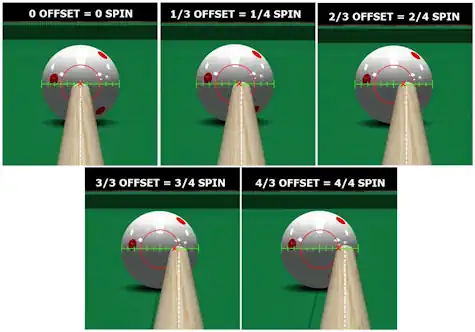
English: Also known as “spin,” English refers to the technique of hitting the cue ball off-center to create spin and control its direction after hitting an object ball.
Dead Ball Shot: This is a type of shot where the cue ball is hit with minimal spin, causing it to roll forward gently after contact with the object ball. It’s often used in situations where the player wants to minimize the movement of the object ball or control the placement of the cue ball for the next shot.
Bank Shot: A shot where the object ball is intended to rebound off one or more rails before being pocketed.
Combo Shot: A shot that involves pocketing an object ball by first striking another object ball.
Rail: The sides of the pool table that the balls can bounce off of during gameplay.
Kick Shot: A defensive shot where the cue ball is hit into a rail before striking the object ball, usually to avoid a direct hit.
Jump Shot: A technically skilled shot where the cue ball is made to jump over an obstructing ball, rather than striking it directly or using a rail. This requires a special cue and a good understanding of the physics involved.
Shot Clock: A time control method used in some competitive billiard matches to ensure a brisk pace of play. Players are given a set amount of time to take their shot, typically ranging from 15 to 45 seconds. If a player fails to execute their shot within this timeframe, they incur a penalty, often resulting in the loss of their turn.
Money Ball: The term “Money Ball” refers to a specific ball that holds more value than the others during certain games; pocketing this object ball typically leads to winning the game or gaining a significant advantage. In games like 9-ball, the Money Ball is the last ball on the table, and its successful pocketing ends the game with victory for the shooter.
Feather Shot: This delicate, strategic shot involves barely touching the object ball with the cue ball, causing minimal movement. It’s especially useful in tight situations where precision is paramount, allowing the player to subtly alter the positioning of the balls on the table without giving away an easy billiard shot to their opponent.
Mastering these advanced techniques and understanding their corresponding terminology can significantly improve your strategy and overall gameplay. Practice incorporating these terms into your regular billiard conversations to solidify your understanding.
How Understanding Terminology Can Improve Your Game
Now, you might be wondering, “How does knowing all these terms actually help me play better?” Great question! Here are a few ways that understanding billiard terminology can directly impact your game:
Clear Communication: When you’re playing with others, being able to clearly express your intentions or discuss strategy using the correct terms can make a huge difference in your teamwork and overall success.
Strategic Thinking: As you learn more advanced terms, you’ll start to think about the game in a more strategic way. Terms like “safety shot” and “kick shot” will become part of your regular thought process as you plan your moves.
Increased Confidence: When you understand the language of the game, you’ll feel more confident in your abilities and more comfortable navigating the billiard world. This confidence can translate into better performance on the table.
Tips for Learning and Memorizing Billiard Terminology
Learning all these new terms might seem daunting at first, but with a few simple strategies, you’ll be a billiard terminology pro in no time:
Play Often: The more you play, the more you’ll hear these terms used in context, making them easier to remember and apply.
Watch Tutorials: There are tons of great online resources, including video tutorials, that can help you visualize these concepts and terms in action.
Make Flash Cards: Writing down key terms and their definitions on flashcards can be a great way to quiz yourself and commit them to memory.
Practice with Friends: Engage in friendly matches with other players and make a point to use these terms in your conversations. Hearing them used in real-time can solidify your understanding.
Wrapping Up
Well, there you have it—a comprehensive guide to billiard terminology that will help you master the language of the game. Remember, learning these terms is an ongoing process, and the more you play, the more naturally they’ll come to you.
Happy shooting, pool enthusiasts!
Frequently Asked Questions (FAQ)
We know that as you’re getting accustomed to the world of billiards, you might have a few questions popping up. Here are some answers to the most common queries we hear from fellow enthusiasts:
What do I do if I forget a term during a game?
Don’t sweat it! Billiards is as much about learning and having fun as it is about competition. If you forget a term, simply ask for a moment to clarify or, if you’re in a casual setting, describe the shot or rule you’re unsure about. Everyone starts somewhere, and most players will appreciate your effort to get it right.
How important is it to use correct billiard terminology in casual play?
While it’s not essential to use perfect terminology in casual play, doing so can help improve your game by making you more mindful of the techniques and rules. Plus, it’s a sign of respect for the game and your fellow players.
Can knowing billiard terminology help me win more games?
Absolutely! Understanding the lingo allows for clear communication and strategic planning, especially in doubles play. It also helps you to think more deeply about the game, considering an angle shot, cut shot, throw shot, draw shot, kill shot, spin shot, and a variety of other shots you might not have thought of otherwise.
Are there regional differences in billiard terminology?
Yes, there can be. While most terms are universally recognized, some phrases and nicknames for shots can vary by region or country. It’s always fun to learn the local lingo wherever you play!
How can I keep up-to-date with new terms or slang in billiards?
Staying engaged with the billiard community is key. Follow billiards blogs, join forums, and participate in local clubs or online groups. The world of billiards is always evolving, and being part of a community is the best way to stay in the loop.
Remember, mastering billiard terminology is just one part of enjoying the game. The most important thing is to keep playing, learning, and having fun! If you have any more questions, feel free to reach out in the comments below or at your next game night. Happy playing!
